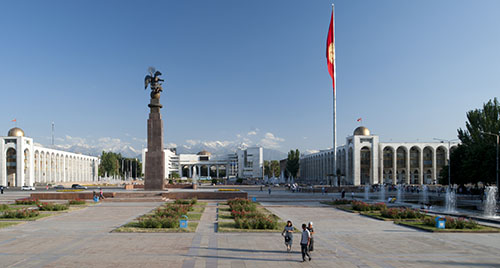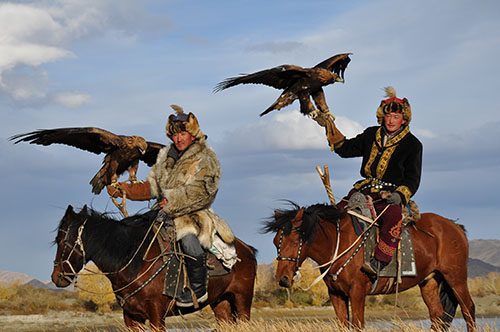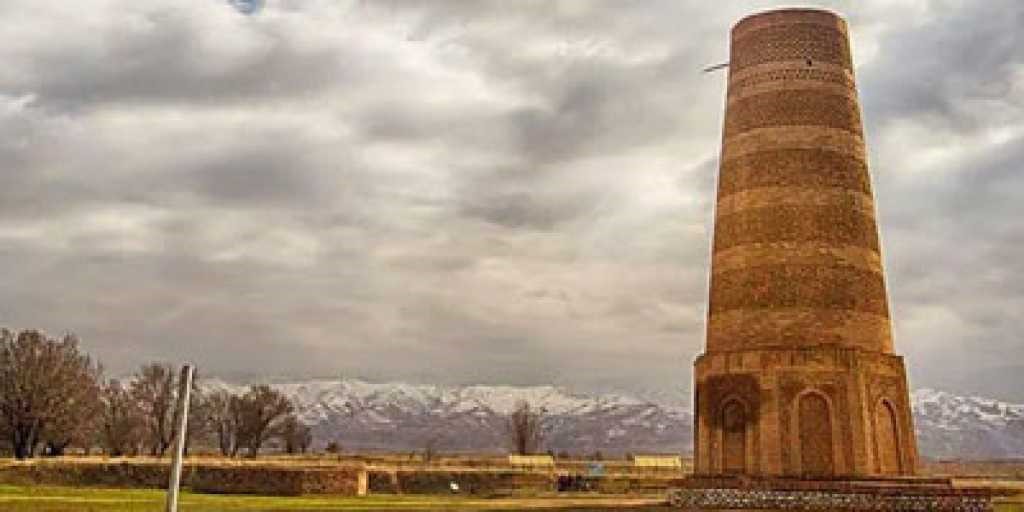Kyrgyzstan is one of the Turkic republics in Central Asia. To the east are China, Tajikistan to the south, Uzbekistan to the west and Kazakhstan to the north.
 The population of Kyrgyzstan, which was 2,172,300 in 1960, was 2,959,900 in 1970, 3,617,400 in 1980 and 4,391,200 in 1990. The 2000 population of Kyrgyzstan was 4,391,200 people. Kyrgyzstan has a population of 5,957,000 according to the year 2015.
The population of Kyrgyzstan, which was 2,172,300 in 1960, was 2,959,900 in 1970, 3,617,400 in 1980 and 4,391,200 in 1990. The 2000 population of Kyrgyzstan was 4,391,200 people. Kyrgyzstan has a population of 5,957,000 according to the year 2015.
HISTORICAL
The Kyrgyz people who were living a civilized life along the Yenisey River entered the state of Hun State in the first century after Milad. Upon the disintegration of the Huns, the Kyrgyz set up the Khakas State. The Hakas State, which was established in the 4th century, ruled from Baykal Lake to Tibet. The Hakas, who fought against the Göktürk State in the 6th century, destroyed the Uighur State in 840. The Kyrgyz, who accepted the Islamic religion under the influence of the Karahans in the 10th century, recognized the rule of the Mongols in the 13th century. In the seventeenth century, the Russian occupation was moved by other Turkish seats. The Kyrgyz have high war capabilities. In the nineteenth century the Kyrgyz territories entered into Russian domination. Until 1924, Turkistan was affiliated with the Autonomous Soviet Socialist Republic, and in 1925 it was named Kara Kyrgyz Autonomous Oblast. After a while Kara was removed. In 1936 Kyrgyzstan became a Soviet Socialist Republic and became one of the fifteen Alliance republics that brought the Soviet Union to the fray. Upon the dissolution of the former Soviet Union in 1991, Kyrgyzstan declared its independence. He became a member of the Commonwealth of Independent States.
Physical Structure
Most of the country's land is covered with mountains. Mountains up to 3000 meters cover more than half of the land. It brings the Kokpaalatau Range, part of the Goddess Mountains, with China, of course, to the square. Peaks of high mountains are covered with snow for four seasons. Numerous short rivers flow from the mountains to the bottom. The main streams are Narin, Tar, Kubaş, Kızıl Su. Issyk Lake, the second largest crater lake in the world, is located on Kyrgyzstan lands. Issyk Lake, which is 1609 m above sea level, has an area of 6202 km2. The deepest place is 702 meters.
Climate
The fact that Kyrgyzstan is far from the sea and has a high land price has a great influence on the climate. The foothills of the mountains are dominated by hot desert winds. A cold climate is dominant in high regions. There is a rainy climate in the area. The western and northern mountain ranges receive an average of 600-900 mm per year, southern skirts of 200-335 mm, and high valleys of around 100-150 mm. Summer and winter, the temperature difference between day and night is very high.
Natural Resources
268/5000
Kyrgyzstan has rich mines. Iron, mercury, rubbing, gold in the mountains of God; The Fergana Valley has oil and gas deposits. There are also coal, salt, kaolin, glass dust beds. Coal deposits are the first in Central Asia with a reserve of 31 million tons.
Vegetation and animals: The north-facing slopes and low valleys of the mountains are covered with forests. These forests occupy only 6% of the country's territory. In the forests, wild animals like wolves, wolves, lynxes, mountain climbers, ases, deer and leopards live.

Population and Social Life
The population of Kyrgyzstan is 4,468,000. Its capital is Bishkek and the population is 641,000. 52.4% of the population is Kyrgyz, 21% is Russian, 12.9% is Uzbek, 2.5% is Ukrainian, 8.1% is other nations and 1.6% is Tatar. Kyrgyzstan divided into six vilayets. These are Celiabad, Issikul, Narin, Osh, Talas and Chuy.
Kyrgyzstan has a high educational level. There are 9 universities in the country and the first university was established in 1932. The literacy rate is 99.8%. There are 1806 secondary schools and 48 technical high schools throughout the country. As in other Turkish republics, education in Kyrgyzstan was made by the state and private schools and universities were allowed to be educated in 1992 with new laws.
Kyrgyz are Muslim, Sunni and Hanafi are in the sect. Sufi majors played an important role in accepting the Kyrgyz Islam. The powerful tribal system that existed in the Kyrgyzstan enabled the rapid spread of Islam. The fact that religious life is very active in Kyrgyzstan has caused propaganda propaganda in Central Asia republics to be the most out of Uzbekistan in this republic. After 1948, nearly 100 books on anti-Islam were published in Bishkek. At the same time, there were regular conferences on religion. Nonetheless, Islam in the region has not been forgotten, after witnessing the independence of Kyrgyzstan, secret worship has begun to be done openly.
Economy
The country's economy is based on agriculture and mining. It is predominantly dominated by an agriculture economy that is predominantly livestock sector. The main agricultural products are wheat, cotton, sugar beet, corn, tobacco, vegetables and fruit. In mountainous regions racing horses are raised, rabbits are fed, beekeeping is done. Most sheep are fed.
The mining sector developed rapidly in Kyrgyzstan when various minerals began to be extracted in the 1970s. Machinery, automotive, food, cement, glass and canned factories are the major industrial establishments. Hydropower plants built on the river are important contributors to the economy. There are around 600 industrial enterprises in the country.
CULTURAL LIFE
Kyrgyz culture has been greatly influenced by "Nomadic Life" and played a big role in the formation of the cultures. It is possible to see the effects of nomadic life in every part of life (home, family, settlement, customs and customs). Kyrgyz felt tent (Boz Üyy: Gray House) has great importance in life. The Kyrgyz people, who have spent their lives in the cooler, cooler winters from the old times, have also created the interior decoration of the tent simply, simply and practically. All of the household goods used have been designed and developed for this kind of life. The formation of the traditional Kyrgyz culture "was also a great influence of the Manas epic. Manas, one of the most important epics of world literature, is 40 times from the Kalevala of the Finns and 4 times from Mahabharata of the Indians. There is a living culture and art life in the Republic of Kyrgyzstan. During the autumn, winter and spring months, regular opera, ballet and theater performances and classical music concerts are held in Başkent BİŞKEK. It is observed that the public has participated in artistic activities.
CULTURAL HERITAGE

Kyrgyzstan has been the cradle of civilization throughout history. The presence on the Silk Road route also contributed positively to the cultural structure.
The country has 508 historical-cultural sites, including UNESCO's World Cultural Heritage List. One of the most important of these is the Balasagun city near the capital Bishkek. Balasagun, the birthplace of Kutadgu Bilig's writer Yusuf Has Hacip. The city was also the center of the Karahans State for a while. The Burana tower, which protects itself as well as its daily life, is a frequent destination for local and foreign tourists. The tower entered UNESCO's "World Concrete Cultural Heritage List" last year.
Sül